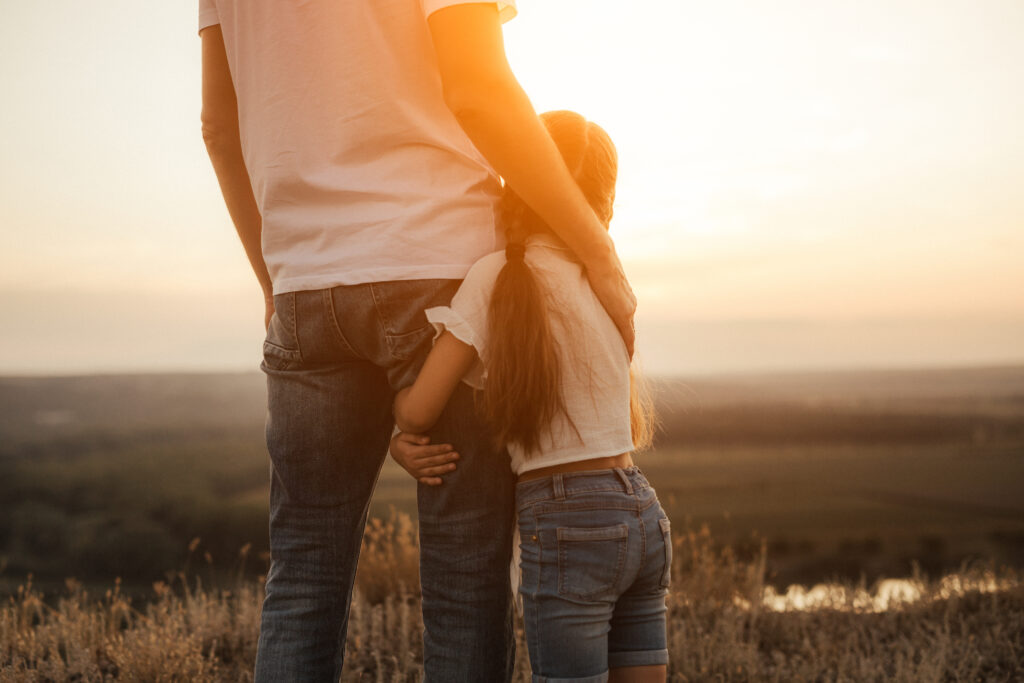Raising Resilient Children
We have to accept that we cannot protect them from everything and accept that letting them fall and fail at times is truly what is best for them.

By Dr. Ely Weinschneider
One of the most important strengths that we want to develop in our children is the ability to be resilient, to handle the inevitable ‘speed-bumps’ that come our way in the journey that we call life. Resilience basically means being able to bounce along with life. The best analogy I heard that helps us understand it is that years ago when they first invented the automobile, they got the engine to run, the belts, radiator- everything was working great. The problem that the makers of automobiles ran into was the tires – the tires kept breaking. They did not have paved highways back in those days. It was all horse and buggy. They were just switching over to cars. The wheels kept cracking and breaking. What they did for a while is they kept making the tires out of harder and harder materials and making them out of steel and concrete and every time they hit a rock or a pothole they kept breaking. Until they started making rubber tires. Rubber tires bounce, and they hit another bump, and they bounce, and adjust, and keep on rolling.
We love to protect our children from everything and anything we can. Reality is that we cannot. Our parental instinct to protect our children-and that is beautiful, and nothing we should be ashamed of. We do the best we can to do so, but we have to accept that we cannot protect them from everything, and what’s even more painful, is that we have to accept that letting them fall and fail at times is truly what is best for them.
We do the best we can to do so, but we have to accept that we cannot protect them from everything, and what’s even more painful, is that we have to accept that letting them fall and fail at times is truly what is best for them.
I remember years ago we were driving, and across the street to my left I saw an accident happen, in seeming slow motion. It did not seem very serious, I am sure no one died from it, or was even severely injured, but I saw an accident happen! Boom! Two cars crashed! Without thinking twice, I instinctively pointed to the right and exclaimed: “Look, look, look! There’s a deer over there.” All my kids turned to the right and were looking for the mysterious deer that was not there and I drove off as fast as I could. Why? I did not want my kids to see this accident. I did not want them to be shocked and traumatized. I lied, and you could easily argue that I did the wrong thing, but it was an instinct. I did not think about it at all consciously. Boom! It just happened because I did not want my kids to be traumatized. I did not want them to see something that I thought would be painful for them or hurtful to them.
We have that instinct, and we want our kids to be protected from everything. Unfortunately, we cannot protect our kids from everything. We cannot follow our children around 24/7 and protect them, no matter how much we want to. We send them to school. There are other kids there. Those kids have siblings. There are teachers – some of them care deeply about your child and are wonderful role models, and some are less so. It is frightening. We don’t know what our child is going to be exposed to. What we need to be able to do is to teach our kids to deal with the bumps in life. When we build their self-esteem and they learn to believe in themselves, when they hit a bump they can deal with better because they are fortified from their loving home.
What we need to be able to do is to teach our kids to deal with the bumps in life. When we build their self-esteem and they learn to believe in themselves, when they hit a bump they can deal with better because they are fortified from their loving home.

As an example, let’s say your child has a teacher who is one of those teachers that you never, ever want your kids to have. You will need to do to do some serious thinking and decide: If you feel they are absolutely poisonous for your child, and you can get them out of the class, by all means do so. Sometimes, however, you must put up with it. You cannot always avoid hardships. It is not the right thing. Each child and each situation are a unique situation and decision, but what you may have to do, is help your child learn to get through it. Obviously, you are going to empathize and show compassion. You will show them that you are with them. But more than anything is you must believe in them, AND you need to model resilience. Yes, it goes back again to modeling. How you deal with adversity is important.
I would like to share with you a cute story. I remember years ago I was driving with my son. He was a tiny little thing, 4 years old at the time. I was driving him home from playgroup, and as I was driving around a corner someone pulled out right in front of me. They simply didn’t see me at all. It could have been bad, really bad. At the last second, I pulled over to the side of the road, and literally stopped inches in front of a tree. I was thinking “whoa, close call”. I don’t remember what I said, if anything. I didn’t curse or anything like that, and then I hear my little kid from the back-seat squeak: “whew, Thank God, we’re ok!” (which, by the way, is exactly what my wife would have said). We sang together on top of our lungs the rest of the way home. It could have been horrible and traumatic, but he wasn’t even shaken up. He handled it fine. Why? Because it was modeled to him time and again to see the good in situations and remain cheerful. When we handle the little things that come up in our lives well, we are modeling to our children on a regular basis how to deal with the speed bumps in life.
Things happen. Things like that will always happen.
As an example, let’s say your 2-year-old who falls down and scrapes their knee. What is the first thing they do? You know what they do? The first thing they do is look at you. They are looking at you very, very carefully. If you have a shocked and frightened expression and go “Huuuu! (gasp),” they start bawling their eyeballs out because your face tells them that this is something that they cannot handle. It’s too much for them. That’s the nonverbal cues they are reading. But if you show sadness, and empathically hug them and say something like, “Oy, you poor thing” and you show compassion and care and concern but not that you’re falling apart, you’re teaching them something particularly important which is- “it’s okay. You scraped your knee but you’re not going to die from this”. No, you are not saying those words, but your face is showing all that. When your kid is going through a hardship like a challenge in school, a scraped knee or their best friend is not talking to them for five whole minutes or something horrible like that 😉, you want to show compassion, but not show that you are falling apart. No one’s dying over here. It’s not the end of the world. There is a balance- you don’t want to be dismissive and say heartlessly, “tough luck, get over it” either. You do want to show compassion, but not that the world is coming to an end.
What happens if your child creates a speed bump for themselves? They create a problem. Your kid was a monster in school and now they’re in trouble. They colored all over the wall, they got into a fight, whatever it is. We want to give the message always that: “I love you. You’re wonderful, but that behavior or action is not so wonderful, it’s not ok.” As a parent, you can’t just say those words with daggers in your eyes. You must feel love and compassion and let them feel it too. You can pull them a little closer, you could hug them. You kiss them on the forehead and in a loving way you will give them a hard time for the behavior, but not for being who they are. “You are a wonderful person. You’re a good boy. You’re a wonderful girl. But I’m sorry. This behavior is not ok. You can’t do this. This is not what we do in our family. This is not how we act”
None of us like to be in challenging situations. I personally pray that God does not give me challenges, but if He does, I pray that I have the strength to not just survive, but to grow from it. This is true for our children as well- on a child level. When our kids face peer challenges, friendship challenges, difficult teachers, whatever it may be, and they handle it well, it helps them believe in themselves and they begin to believe that they can conquer really hard things in life. They learn to better roll with the punches and know that they can not only survive but thrive.
We shouldn’t ‘feed’ our children the answers all the time, though we should help them explore their choices and we can suggest solutions. There are ages and stages, but as much as you can help them realize that they have ownership over their lives. We need our children to realize that we parents are not dictators who control their lives, nor do we possess superpowers to fix every situation in their life. They can make their lives beautiful and they will; and unfortunately, like the rest of us, they can sometimes make their own lives miserable, hopefully in small and insignificant ways. The message we want them to receive is: “it’s up to you, my beloved child. It’s up to you to make choices, and when you can make great choices, don’t you see? When you make great choices, you are making life fantastic for yourself. Look, you did it last time. You did it the time before and I know that you can and will do it again.”
As difficult as this is to accept, we need to accept that we are doing them a disservice by always hovering over them and giving them all the answers and giving solutions and taking care of all their problems. Yes, we are loving and instinctively protective parents. We do whatever we can to shield our children from pain, but within a healthy safe environment we need to let our kids struggle, bounce along, spread their wings, and figure out how to soar – right along with us.
